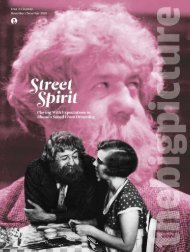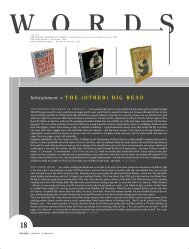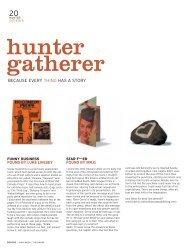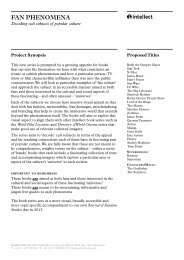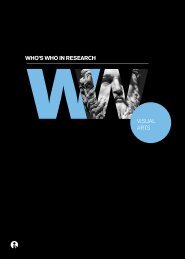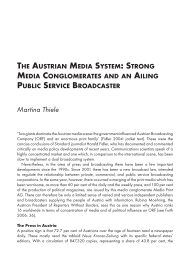Anthem - Intellect
Anthem - Intellect
Anthem - Intellect
You also want an ePaper? Increase the reach of your titles
YUMPU automatically turns print PDFs into web optimized ePapers that Google loves.
Signifying Europe<br />
‘Marche en rondeau’ was in 1954 adopted by the EBU as a jingle for its newly launched<br />
disseminations. There seems never to have been any serious discussion of adding any<br />
lyrics, nor any such need, since nobody expects any viewer/listener to join in singing<br />
such a televised jingle.<br />
Charpentier composed his most famous Te Deum in D (one of total six) in the Jesuit<br />
Saint-Louis church in Paris. In the late seventeenth century, the Jesuits were suspected<br />
of supporting Spanish interests in France. Charpentier had studied with Carissimi in<br />
Rome, and he brought modern profane sounds into the conservative church music,<br />
with straightforward and symmetric melodies and charmingly sonorous choruses.<br />
The only 1.5 minutes long Te Deum prélude is an anthem of the march type, and the<br />
composer himself characterised it as ‘bright and very warlike’. It starts with an upward<br />
swing closely reminiscent of ‘La Marseillaise’. However, while the latter continues with<br />
fanfare motifs calling people to rise against authorities, the former instead continues<br />
with neatly rounded melodies to conciliatory harmonies. While ‘La Marseillaise’ has<br />
radical or liberal republican and universalist associations, Charpentier’s march instead<br />
seems to attract rather conservative and nationalist French royalist fans, judging from<br />
the many comments like ‘Vive la France!’ and ‘Vive le roi!’ found under recordings at<br />
various YouTube sites, where for instance ‘darlingelf ’ says ‘I wish that when I die my<br />
soul is magically transported to the time of the Grand Monarch!’ and gets support<br />
from ‘Sallieri1’: ‘Heil to the Old Europe! Beautiful! <strong>Anthem</strong> of christian, strong world!<br />
Nowadays our civilisation is dead … R.I.P.’ 432<br />
A reviewer has described it as ‘a rousing bit of splendor out of which we moderns<br />
have constructed a musical icon of Louis XIV’s France’, combining ‘martial, dance-like,<br />
and intimate’ aspects into a piece that ‘evokes the close unity of church and state’. 433<br />
In the twentieth century, the media, headed by television, can be said to have taken<br />
the place of religion, recontextualising the same music to now instead evoke public<br />
service’s close unity of media culture and nation states.<br />
With the EU, UEFA and EBU anthems, a wide range of west and central European<br />
influences balance each other. EU selected the German-Austrian-Dutch Beethoven,<br />
UEFA opted for Händel with his English basis while importing also German and<br />
Italian styles, and EBU chose the French Charpentier with some Spanish and Italian<br />
tints. Together they significantly cover the most influential of the original EU national<br />
traditions, though less relevant for the eastern and also northern part of Europe. All<br />
of them manage to symbolically elevate the bodies they represent, but while the<br />
European anthem has a republican, almost plebeian and modern ring, uplifting not<br />
by ceremonial brilliance but by quasi-natural, balanced perfection, the two others<br />
are firmly anchored in a traditional aristocratic and royal context. EU’s hesitation to<br />
the ‘Ode to Joy’ lyrics for being ‘too universal’ has no counterpart for the other two<br />
anthems, and it may well be that the republican spirit of Beethoven is less bound<br />
to Europe than the monarchist mentality found in Charpentier and Händel, though<br />
188



